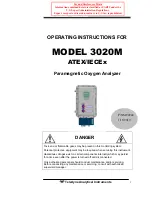
5
The Leupold GX
3
series of rangefinders emit a series of invisible, infrared energy
pulses that are reflected off the selected target back to the optical unit. State-of-
the-art circuitry and precision computing circuits are used to calculate the distance
instantaneously by measuring the time it takes for each pulse to travel from the
GX
3
rangefinder to the object and back. Surface texture, color, size, and shape of
the target all affect reflectivity, which in turn affects the maximum range of the
instrument. As a rule of thumb, brightly colored targets are much more reflective
than darker targets, with black being the least reflective color. A shiny surface is
more reflective than a dull surface. Smaller targets are more difficult to range than
larger targets. Light conditions, haze, fog, rain, and other environmental conditions
can all affect ranging performance. Any factor which degrades air clarity will reduce
the maximum effective range. Bright light shining directly on the lenses reduces
the effectiveness, producing shorter maximum ranges than those possible on darker
(overcast) days. The steadier the GX
3
unit is held, the greater the maximum distance.
HOW IT WORKS
Содержание 174776
Страница 1: ...OPERATING INSTRUCTIONS GX 3i3 and GX 4i3 RANGEFINDERS...
Страница 11: ...9 OPERATION QUICK SET MENU GX 4i3 display shown with all possible characters visible...
Страница 38: ...36 NOTES...
Страница 39: ...37 NOTES...
Страница 40: ...Part 174890 Artwork 174896B...








































